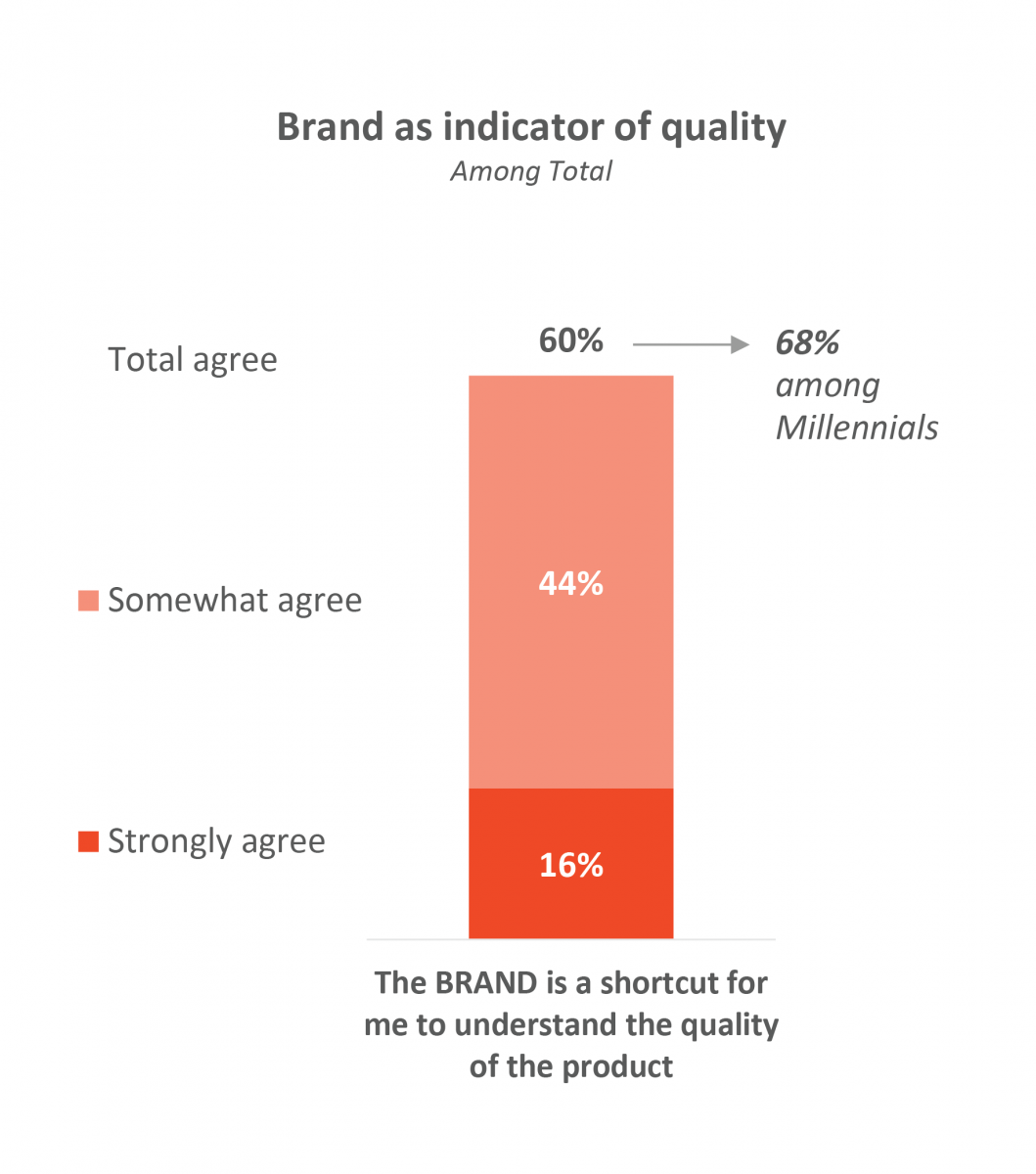
What is a cultural brand?
We know what “cultural” means. We know what “brand” means. Put the two together, and you have a concept that, we believe, is an important element in any company’s marketing strategy toolbox. On the one hand, branding gives a product or company its identity. On the other, culture gives any social grouping its sense of identity. A cultural brand identifies and then enhances the link between group identities and product identities and can often be a driving force in creating the very groups or subcultures that form their identities around a particular product or company.
This observation was penned in 2003, three years into a new millennium, for our book Reflections on a Cultural Brand. Thus began our quest to understand “brand.” Now, almost two decades later, we have updated our understanding in the new report Brand Ambition: Food and Beverage Private Brands & Beyond.
Today, we find that brands, in their effort to appeal to consumers, have always offered a reflection of the cultural landscape, and the American cultural landscape has changed dramatically in the last half a century.
The two most relevant threads of this cultural evolution have been the increasingly sophisticated understanding consumers have of their health (and the many ways our bodies are interconnected and affected by the outside world) and a vastly expanded access to information, fueling not only consumers’ understanding of health but also of other benefits that foods and beverages can or should deliver.
The expectations of food and beverage brands have evolved along with this cultural shift.
Consumers today are far more empowered than ever before to demand that brands meet this expanded and diversified set of needs and are able to determine which brands do so. They assess taste, quality and attributes related to health, nutrition and sourcing purity before consciously using brand itself as a product selection driver. They are open to switching when another product or brand better meets their needs or better suits their wallets.
This diminished dependency on brands is a mainstream phenomenon, spanning genders, ages, income levels and even consumers’ orientation towards health and wellness, the exception being education (more highly educated consumers rely on brands less).
Brands that meet the needs of their target consumers have an opportunity to build lasting loyalty. The proliferation of food and beverage options on the market, each offering a different combination of attributes, has presented consumers with a paradox of choice, and they need help sorting through the possibilities.
Far from becoming less relevant in an attribute-focused world, brands that are consistent and clear about which needs they are aiming to meet can stake out areas of distinction and relevance. As such, consumers are reaching not for the brand alone but for the brand as a representation of all the unique attributes they seek.

The Opportunity to Nurture Loyalty
As consumers seek an ever-growing set of attributes, brands (name brands or private brands) that meet these expectations have an opportunity to build true loyalty and differentiation.
Consumers may be shifting away from brand dependency—reliance on the brand to stand in for all the attributes they sought—but they are still open to brands as guarantors of quality, consistency and taste.
This relationship, however, cannot be taken for granted any longer. Brands must deliver on the promises they make and continue to engage these more empowered consumers.
About The Hartman Group’s Brand Ambition Report: Understanding the Dynamic Factors the Role of “Brand” Plays in Guiding Shoppers’ Purchasing Decisions.
The H artman Group’s Brand Ambition: Food and Beverage Private Brands & Beyond report examines how trends in the American cultural landscape have affected the role brands play in consumers’ food lives today and provides future-looking guidance in several areas of possibilities: pricing, attributes, innovation and operating in today’s online environment.
artman Group’s Brand Ambition: Food and Beverage Private Brands & Beyond report examines how trends in the American cultural landscape have affected the role brands play in consumers’ food lives today and provides future-looking guidance in several areas of possibilities: pricing, attributes, innovation and operating in today’s online environment.
The study then takes a deeper dive into the world of private brands: the role they play in consumers’ grocery repertoires, comparisons to name brands across a range of purchase criteria, perceptions of value vs. premium/organic/better-for-you private brands and the flow of mutual benefit between retailers and their private brands. A spotlight on several categories offers insights relevant to other categories sharing similar characteristics.
You can download the report overview and order form here: THG Brand Report
